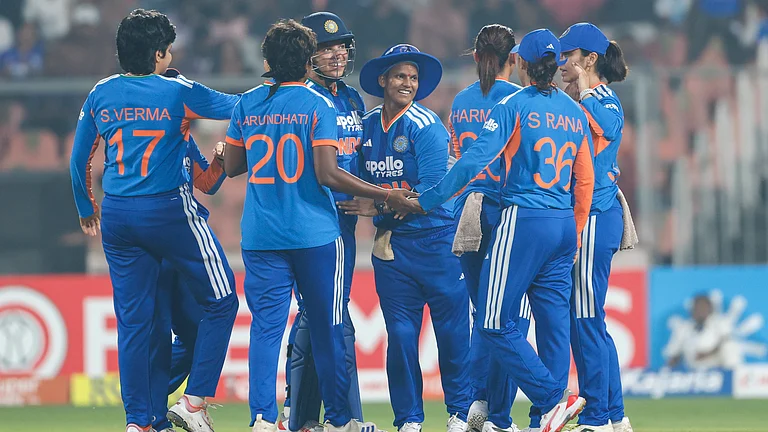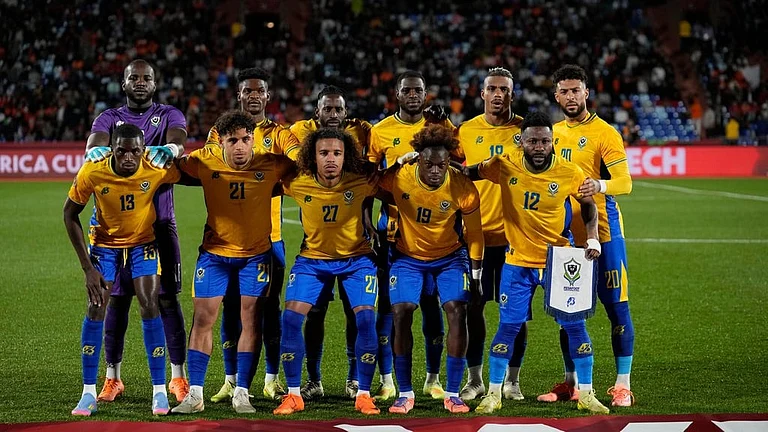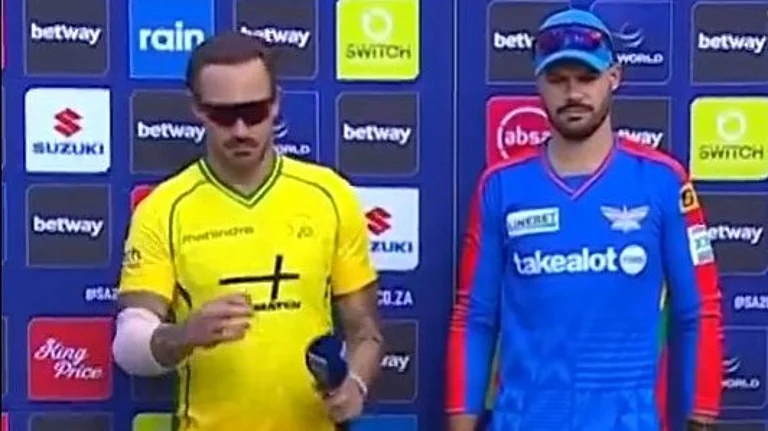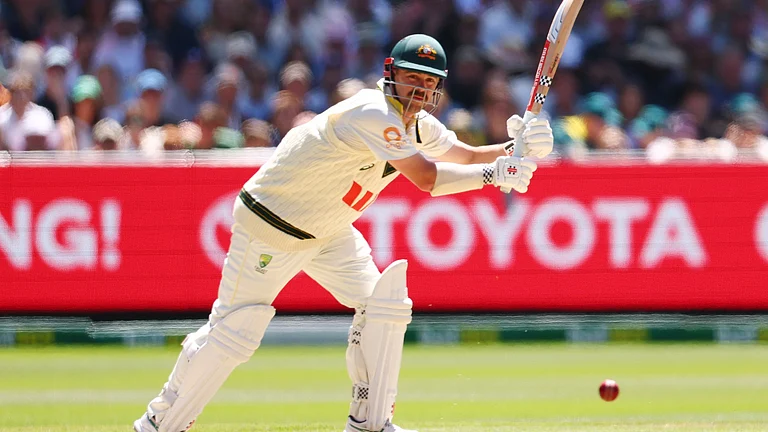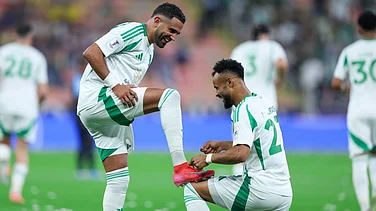Simdega is in southwest Jharkhand. A small town. Surrounded by Odisha in the south and Chhattisgarh in the west. Seventy percent of the population is Scheduled Tribes. The urban population comprises merely 6.6 percent. A resident of Bolba block’s Kasira Baliyajor village, Sumrai Tete’s tiny hands held sticks made of kendu (ebony) and baans (bamboo) to learn the basics of hockey. Though it began as entertainment, it soon transformed into a passion. No remorse for not having shoes. Even with transport fares running scarce. Houses made of mud yet spirits high and will strong.
Fate took a turn for Tete in 1990. The expert eyes of international hockey coach, Narendra Singh Saini, and former District Sports Officer, Robert Kispotta, found a gem in Sumrai and brought her to the State Hockey Training Centre at the Government Girls High School, Bariatu, Ranchi.
This was the first time she held a hockey stick, worth Rs 80. Forget about even seeing turf shoes, her tennis shoes would be torn and there’d be no money to buy new ones. The same Sumrai went on to become a regular part of the Indian senior hockey team from 1995 to 2006, playing more than a hundred international matches. She carried the pride of captaincy as well. Later, she served as the coach for the national team. In 2017, she became the first female hockey player in the country to receive the Major Dhyan Chand Award for Lifetime Achievement in Sports and Games.
ALSO READ: The Adivasi World: One With The Earth
This saga of struggle is not just limited to Sumrai Tete. Majority of tribal sportspersons from Jharkhand go through similar ordeals. Jharkhand is not only home to an abundance of minerals but also to talented tribal sportspersons. The FIFA Under-17 Women’s Football World Cup (2022) registered India’s participation for the first time. Ashtam Oraon of Gumla district, Bishunpur block, Banari Gorratoli village was captain. Apart from Ashtam, the team included Neelu Linda, Anjali Manda, Anita Kumari, Purnima Kumari and Sudha Ankita Tirkey. Ashtam’s house didn’t even have electricity or television. Not even a paved road to reach the village. It was only in Ashtam’s name that a road had been built hurriedly. Ironically, her parents worked as daily wage workers in the construction of the same road. Upon the initiative of Gumla’s Deputy Commissioner, a television set and inverter were installed in her house.
The Gumla district administration made Ashtam brand ambassador of the Savitribai Phule Kishori Samridhi Yojna. It was also announced that a stadium would be built in the village in her name. In the recently held Asian Under-18 Athletic Championship in Kuwait, Jharkhand’s Ashakiran Barla secured a gold medal in the 800 m race. Asha comes from an extremely poor family, without even a toilet at her home. In the third Blind T-20 World Cup to be held from 6th-17th December, Ranchi’s Sujit Munda will be representing the Indian team. Sujit too is from a very poor family, with three brothers working as labourers.
ALSO READ: The Adivasi Writes Back
Sports is a rather important part of human life, but an even more integral part of the everyday life of tribal communities. ‘Senge Susun Kajige Durang’ goes a Jharkhandi proverb, which means walking itself is dance and speaking, music. The skilled tribal hunters are immaculate in their targets.
Jaipal Singh Munda became the first star from a tribal community. Conan Cosgrave, the headmaster of St. Paul’s School, Ranchi, took Munda with him to England. Jaipal Singh was not just the only Indian Oxford Blue hockey player, but also adept at football, cricket and tennis. He captained the Indian hockey team which won India’s first gold at the 1928 Amsterdam Olympics. On an international stage, tribal sportspersons from Jharkhand kept adding new records to the golden chapter of Indian sports. This includes the likes of Michael Kindo (1972), Silvanus Dungdung (1980), Manohar Topno (1984), Ajit Lakra (1992), Nikki Pradhan (2016, 2021) and Salima Tete (2021). The 1980 Moscow Olympics was the last time that India secured a gold medal in hockey. Simdega’s Silvanus Dungdung was part of this team. Only recently did Nikki Pradhan become Jharkhand’s first female hockey player to represent the country in two Olympic games.
It was in 1845 that Christian missionaries entered Jharkhand. A few years later, during the Revolt of 1857, the British administration had to face immense opposition. To build better relationships with others, they had to seek support from sports. During the colonial era, Chhota Nagpur’s first Bishop, Edward Hamilton Whitley, son of Jesse Whitley, formed a team of people associated with the Anglican Church in Ranchi and participated in the Beighton Cup under the name of the SPG Mission, Ranchi. The team was made up of gardeners, cooks, cleaners, sweepers, carpenters, etc.
According to senior sports journalist, Subhash Dey, the champion team’s goalkeeper, Nehemia Minz, was a carpenter by profession, Sadho Kachhap, a cook, Ishwari Prasad Minz, the Bishop’s help, and Prabhu Sham Dadel, a carpenter. One may compare Bhuvan’s team from the film Lagaan. By winning the Baton Cup in the years 1897, 1898, 1902, 1903, 1906 and 1907, the team brought to the forefront the tribal talent of Chhota Nagpur. In total, the team won the cup six times and remained champions for three consecutive years. This legacy is being carried forward by the likes of Salima Tete, Beauty Dungdung and Sangita Kumari. In fact, the tribal belt is full of talented sportspersons. The need of the hour is to hone this properly.
Tribal sportspersons have especially gained achievements in hockey, athletics and archery. Archers Purnima Mahto and Jhano Hansdah, sprinters Pushpa Hassa and Vijay Nilmani Khalkho, footballer Sudhir Tirkey, badminton player Vincent Tirkey and boxer Anthras Lakra have also left their mark.
A recipient of the Dronacharya Award in 2017, international coach, Narendra Singh Saini, trained more than 65 international sportspersons for the country. He believes that tribal sportspersons are naturally talented. Training brings them tremendous improvement and they shine easily at an international level. Arjuna and Dronacharya awardee, Sanjeev Kumar Singh, was associated with the Tata Archery Academy for a long time. According to him, archery and hockey flow in tribal blood. Tribals are a dedicated and talented community. There is a great passion to go ahead in the sport of their choosing. According to the report of the Federation of Indian Chambers of Commerce and Industry (FICCI), 62 percent of the youth in India have an interest in various sports but only 1 percent of them actively participate. It is also true that more than 80 percent of India’s sportspersons who make it to the international level have their roots in villages. Villages are packed with talent. US national, Franz Gastler, started training local tribal girls in football in 2008 in Hutup, Ormanjhi, in Ranchi. YUWA started this training programme around the issues of child marriage, human trafficking and youth dropping out of schools and colleges. Within a few years, eight tribal girls and two boys went to Spain to learn the nuances of football. They also got a chance to play for Real Sociedad. The YUWA School was started in 2015, where English is specially taught alongside different sports. Now, preparations are on to build a residential school. In 2013, Anand Prasad Gop also started football training with 15 girls in Irba. Today, 250 sportspersons have been trained in six villages. Apart from national-level competitions, girls from here have also represented the country in Denmark, Russia and England. According to Dashrath Mahto, coach of Olympian Nikki Pradhan, and associated with hockey training in Khunti, there is a lot of poverty in the villages and youth look at sports as a career here. Manoj Konbegi, who grooms hockey talent in Simdega, believes that tribal youth are hardy due to the geography and that tenacity is their natural virtue. General Secretary of Hockey India, Bholanath Singh, agrees that tribal sportspersons have amazing talent. They are devoted and have high endurance. According to him, they can comfortably pull off their game even on the hottest days without losing their spirit. With good coaches, a good diet and modern facilities, encouragement at the village and block levels, modern-day training at the panchayat and district levels, Jharkhand can become a hub of sports in the country.
(This appeared in the print edition as "Tribal Talent")
(Translated from Hindi by Pratyush Pushkar. Views expressed are personal)
Dr Shahnawaz Quraishi was a senior journalist at Prabhat Khabar and is now with the Department of Education, Jharkhand







